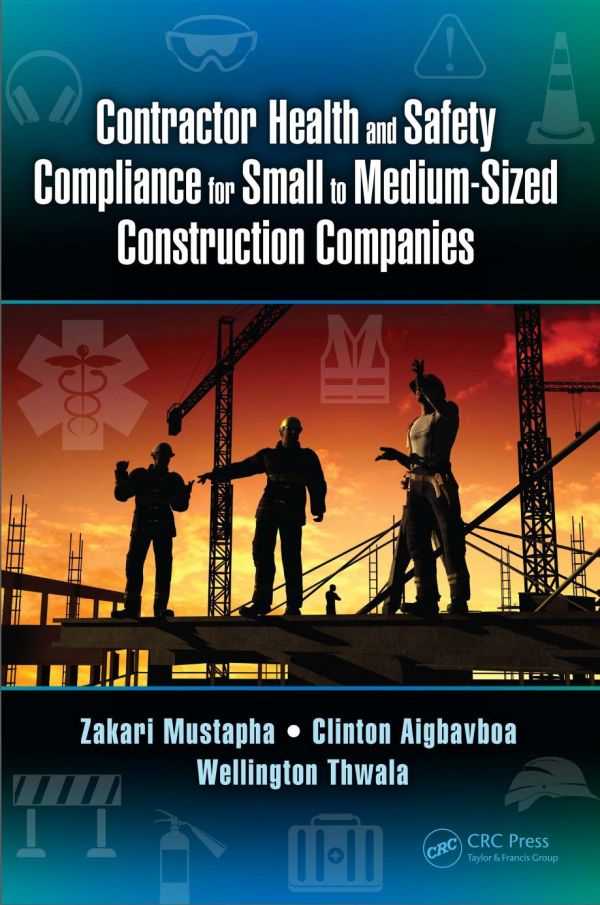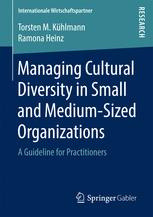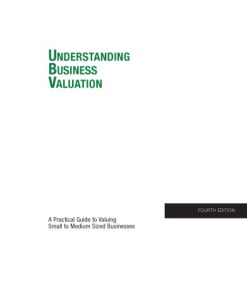Contractor Health and Safety Compliance for Small to Medium Sized Construction Companies 1st Edition by Zakari Mustapha,Clinton Aigbavboa,Wellington Thwala 9781138081550 1138081558
$50.00 Original price was: $50.00.$25.00Current price is: $25.00.
Contractor Health and Safety Compliance for Small to Medium Sized Construction Companies 1st Edition by Zakari Mustapha,Clinton Aigbavboa;,Wellington Thwala – Ebook PDF Instant Download/Delivery:9781138081550,1138081558
Full download Contractor Health and Safety Compliance for Small to Medium Sized Construction Companies 1st Editionafter payment

Product details:
ISBN 10:1138081558
ISBN 13:9781138081550
Author:Zakari Mustapha,Clinton Aigbavboa;,Wellington Thwala
This book explores the formation of small and medium-sized construction company’s (SME) compliance with health and safety issues in developing countries. Little has been written about the formation of SME contractors’ health and safety compliance for developing countries, especially, in the sub-sahara regions where construction and infrastructure development activities have significantly increased in order to serve the development mandate of those countries. Thus, this book will provides insight into construction safety for SMEs, as well as health and safety compliance, and its policy implementation trends and development.
Contractor Health and Safety Compliance for Small to Medium Sized Construction Companies 1st Table of contents:
Section I Background Information
Chapter 1 General Introduction
1.1 Introduction
1.2 Significance of the Book
1.3 Structure of the Book
1.4 Summary
References
Section II Theoretical and Conceptual Perspectives of Health and Safety Research
Chapter 2 Theoretical and Conceptual Perspectives of Health and Safety Research
2.1 Introduction
2.2 Accident Causation Theories
2.2.1 Who Should Be Blamed: The Worker or the System?
2.2.2 Accident Causation Models
2.2.2.1 Domino Theory
2.2.2.2 Multiple Causation Model
2.2.2.3 Human Error Theories
2.2.2.4 Accident Root Causes Tracing Model
2.2.2.5 Modified Statistical Triangle of Accident Causation
2.3 Measuring Health and Safety Compliance Improvement
2.4 Summary
References
Section III Review of the Health and Safety Compliance Literature
Chapter 3 Review of the Health and Safety Compliance Literature
3.1 Introduction
3.2 Gaps in Health and Safety Compliance Research
3.2.1 Gap 1: Government Support
3.2.1.1 Health and Safety Policy and the Organisation
3.2.1.2 Training and Information
3.2.2 Gap 2: Contractor’s Organisational Culture
3.3 Summary
References
Section IV Construction Industry: International Literature
Chapter 4 Construction IndustryInternational Literature
4.1 Introduction
4.2 The Construction Industry
4.2.1 Complex Nature of the Construction Industry
4.2.2 Challenges Facing Construction Workers
4.3 Accidents in the Construction Industry
4.3.1 Fatal Injuries to Workers
4.3.2 Major Injuries
4.4 Influence Network on Health and Safety
4.5 Techniques to Improve Health and Safety Compliance
4.5.1 Health and Safety Compliance
4.5.2 Problems Raised in Health and Safety Compliance Research Study
4.5.3 Reasons for Non-Compliance in Health and Safety
4.5.4 Ineffective Government Policy Leading to Failures
4.5.5 Compliance Is Costly
4.5.6 Rewards and Incentives for High or Voluntary Compliance
4.6 Management of Health and Safety at Work Regulations 1999
4.6.1 Safety Culture
4.6.2 Economics of Construction Health and Safety
4.6.3 General Duties of Employers to Their Employees with Regard to OHS Issues
4.6.4 General Duties of Employers and Self-Employed Persons to Persons Other Than Their Employees
4.6.5 General Duties of Employees at Work
4.6.6 Health and Safety Representatives
4.6.7 Functions of the Health and Safety Representatives
4.7 Small to Medium-Sized Construction Companies’ Performance with Safety Regulations
4.7.1 Impact of the Small and Medium-Sized Enterprise on Health and Safety
4.7.2 Factors Affecting Small and Medium-Sized Enterprises’ Non-Compliance and Motivation with Occupational Health and Safety Regulations
4.8 Summary
References
Section V Occupational Health and Safety Issues in Developing Countries
Chapter 5 Occupational Health and Safety Issues in the Nigerian Construction Industry
5.1 Introduction
5.2 Occupational Health and Safety Act in Developing Countries
5.2.1 Occupational Safety and Health Problems
5.3 Development of Human Resources for Occupational Health and Safety in Developing Countries
5.4 Benefits of Occupational Health and Safety for Developing Countries
5.5 Occupational Health and Safety in Nigeria
5.5.1 Occupational Health and Safety Development in Nigeria
5.5.2 Occupational Health and Safety in Nigeria
5.5.3 Annual Accident Statistics from the Federal Ministry of Labour and Productivity Inspectorate Division
5.5.4 Measures to Ensure Occupational Health and Safety Operation in Nigeria
5.5.5 Benefits or Gains of Occupational Health and Safety to the Nigerian Construction Industry
5.6 Objectives of Health and Safety Policy in Nigeria
5.7 Basis for Health and Safety Compliance in the Nigerian Construction Industry
5.8 Summary
References
Chapter 6 Occupational Health and Safety in South Africa
6.1 Introduction
6.2 Occupational Health and Safety in South Africa
6.3 Health and Safety Policy in South Africa
6.3.1 Objectives of Health and Safety Policy in South Africa
6.3.2 Occupational Health and Safety Problems in South Africa
6.4 South African Legislation and the Construction Regulations
6.4.1 Characteristics of the Occupational Health and Safety Legislative Framework and the Construction Regulations
6.5 Regulatory Enforcement
6.5.1 Aim and Scope of the South Africa Occupational Health and Safety Act
6.5.1.1 Severity and Scope of the Hazard and Risk Concerned
6.5.1.2 Removing or Mitigating Occupational Health and Safety Hazard or risk
6.5.2 The Health and Safety Policy Statement
6.5.3 Construction Health and Safety Statistics in South Africa
6.5.4 Compliance and Non-Compliance
6.6 Lessons Learnt from the South African Occupational Health and Safety Studies
6.7 Summary
References
Chapter 7 The Construction Industry and Occupational Health and Safety in Ghana
7.1 Introduction
7.2 The Ghanaian Construction Industry
7.2.1 Challenges of the Construction Industry
7.3 Institutional Environment
7.4 Economic Contribution of the Ghanaian Construction Sector
7.4.1 Construction Sector’s Share to Overall Gross Domestic Product
7.4.2 Construction Sector’s Contribution to the Overall Industrial Development
7.4.3 Aggregate Loan Portfolio to the Construction Sector
7.4.4 Construction Sector Component Output Index
7.5 Occupational Health and Safety Legislature in Ghana
7.6 Regulation Setting in Ghana
7.6.1 International Labour Organization Conventions Ratified by Ghana
7.7 Health and Safety Legislation Relevant to the Ghanaian Construction Industry
7.8 Health and Safety Policy Trends in Ghana
7.8.1 Current Trends of Occupational Health and Safety in Ghana
7.8.2 Approach to Occupational Health and Safety Management in Ghana
7.8.2.1 National Policy
7.8.2.2 Planning and Implementation
7.9 Lessons Learnt from the Ghanaian Construction Industry
7.10 Summary
References
Section VI Research Methodology
Chapter 8 Research Methodology
8.1 Introduction
8.2 Quantitative versus Qualitative Research Methodology
8.3 Philosophical Considerations in Research Methodology
8.3.1 Ontology
8.3.2 Epistemology
8.3.3 Quantitative Methodology
8.3.4 Qualitative Methodology
8.3.5 Combined Quantitative and Qualitative Methods
8.3.6 Mixed-Methods Approach
8.3.7 Justification of the Mixed-Methods Approach
8.4 Research Design
8.4.1 Methods
8.4.2 Literature Review
8.4.3 The Delphi Method
8.4.3.1 Epistemological Approach towards the Delphi Design
8.4.3.2 When to Use the Delphi Technique
8.4.3.3 Components of the Delphi Technique
8.4.3.4 Designing, Constructing and Executing the Delphi Technique Study
8.4.3.5 Specific Objectives of the Delphi Study
8.4.3.6 Computation of Data from Delphi Study
8.4.3.7 Determination of Consensus from the Delphi Process
8.4.3.8 Reliability and Validity of the Delphi Process
8.4.4 Questionnaire Survey
8.4.4.1 Questionnaire Survey Instrument
8.4.4.2 Variables
8.4.4.3 Population
8.4.4.4 Sample Frame
8.4.4.5 Sampling Method
8.4.4.6 Sample Size
8.4.4.7 Sample Selection
8.4.4.8 Fieldworkers
8.4.4.9 Data Collection
8.4.4.10 Data Analysis from the Questionnaire Survey
8.4.4.11 Data Screening and Preliminary Analysis
8.4.4.12 Data Cleaning
8.4.4.13 Missing Data
8.4.4.14 Normality
8.4.4.15 Treatment of Outliers
8.4.4.16 Criteria for Determining Reliability and Validity
8.4.4.17 Content Validity
8.4.4.18 Reliability
8.4.4.19 Convergent Validity
8.4.4.20 Discriminant Validity
8.4.5 Methods of Data Analysis of the Quantitative Survey
8.4.5.1 Exploratory Factor Analysis
8.4.5.2 Structural Equation Modelling
8.4.6 Structural Equation Modelling Analysis
8.4.6.1 Structural Equation Modelling Process
8.4.7 Ethical Considerations
8.5 Summary
References
Section VII Results from the Delphi Study: Findings Part I
Chapter 9 Results from the Delphi Study
9.1 Introduction
9.2 Background to the Delphi Survey
9.3 Findings from the Delphi study
9.3.1 To Identify the Main and Sub-Attributes That Determine Health and Safety Compliance in Small to Medium-Sized Construction Companies in Ghana
9.3.2 To Determine the Factors That Enable Small to Medium-Sized Construction Companies to Comply with Health and Safety
9.3.3 To Identify the Factors That Affect Small to Medium-Sized Construction Companies in Not Complying with Health and Safety Regulations
9.3.4 To Identify the Effects of Health and Safety Non-Compliance on Small to Medium-Sized Construction Companies
9.3.5 To Evaluate the Management Issues That Affect the Government in the Implementation of Health and Safety Policies
9.4 Discussion of the Delphi Study Results
9.5 Summary
References
Section VIII Conceptual Integrated Health and Safety Compliance Model for Small to Medium-Sized Construction Companies
Chapter 10 Conceptual Integrated Health and Safety Compliance Model for Small to Medium-Sized Construction Companies
10.1 Introduction
10.2 Selection of Variables for Health and Safety Compliance
10.2.1 Safe Environment
10.2.2 Safe Act of Workers
10.2.3 Safe Working Condition
10.2.4 Reaction of Workers to Safe Condition (RWSC)
10.3 Model Specification and Justification
10.4 Structural Component of the Model
10.5 Measurement Component of the Model
10.6 Summary
References
Section IX Results from the Questionnaire Survey: Findings Part II
Chapter 11 Survey Results
11.1 Introduction
11.2 Descriptive Statistics
11.2.1 Demographic Profile of the Respondents and Firms
11.3 Inferential Statistics
11.3.1 Conceptual Health and Safety Compliance Model for Small to Medium-Sized Construction Companies
11.3.2 Results of Exploratory Factor Analysis Data
11.3.2.1 Exploratory Factor Analysis: Dimensionality of Health and Safety Compliance Elements
11.3.2.2 Comparative Analysis of Frequencies for Exploratory Factor Analysis and Confirmatory Factor Analysis
11.4 Structural Equation Modelling
11.4.1 Structural Equation Modelling Analytic Strategy
11.4.2 The Measurement Model: Confirmatory Factor Analysis
11.4.2.1 Statistics on Structural Equation Modelling Assumptions: Outliers and Missing Data
11.4.2.2 Statistics on Structural Equation Modelling Assumptions: Data Distribution Characteristics
11.4.2.3 Statistics on Structural Equation Modelling Assumptions: Identifiability of the Model
11.4.3 Confirmatory Factor Analysis of the Latent Construct
11.4.3.1 Fit Statistics on Measurement Models (Confirmatory Factor Analysis)
11.4.3.2 Structural Model: Testing of the Hypothesised Structural Equation Model
11.4.3.3 Structural Model Hypothesis Testing
11.4.3.4 Summary of Structural Model
11.5 Summary
References
Section X Discussion of Findings
Chapter 12 Discussion of Results
12.1 Introduction
12.2 Questionnaire Survey Results
12.2.1 Safe Environmental Features’ Influence on Health and Safety Compliance of Small to Medium-Sized Construction Companies
12.2.2 Safe Act of Workers Influence on Health and Safety Compliance of Small to Medium-Sized Construction Companies
12.2.3 Safe Working Condition Features Influence on Health and Safety Compliance of Small to Medium-Sized Construction Companies
12.2.4 Reaction of Workers to Safe Condition on Health and Safety Compliance
12.2.5 Contractor’s Organisational Culture on Health and Safety Compliance in Small to Medium-Sized Construction Companies
12.2.6 Government Support Influence on Health and Safety Compliance
12.3 Delphi Survey and Questionnaire Results
12.4 Summary
References
Section XI Conclusions and Recommendations
Chapter 13 Conclusions and Recommendations
13.1 Introduction
13.2 Conclusions
13.2.1 Research Objective Conclusion 1
13.2.2 Research Objective Conclusion 2
13.2.3 Research Objective Conclusion 3
13.2.4 Research Objective Conclusion 4
13.2.5 Research Objective Conclusion 5
13.3 Contribution and Value of the Book
13.3.1 Theoretical Contribution
13.3.2 Methodological Contribution
13.3.3 Practical Contribution and Value
13.3.3.1 Significance to the Ministry of Water Resources, Works and Housing
13.4 Recommendations
13.4.1 Methodological
13.4.2 Theoretical
13.4.3 Practical and Policy Implications
13.5 Limitations
13.6 Summary
People also search for Contractor Health and Safety Compliance for Small to Medium Sized Construction Companies 1st:
independent contractor health insurance reddit
independent contractor health insurance tax deduction
principal contractor health and safety responsibilities
electrical contractor health and safety policy
private contractor health insurance
Tags:
Zakari Mustapha,Clinton Aigbavboa;,Wellington Thwala,Safety,Compliance
You may also like…
Politics & Philosophy
Business & Economics
Business & Economics - Personal Finance
Jurisprudence & Law - Foreign & International Law
Small and medium-sized enterprises in international economic law First Edition Rensmann
Computers - Organization and Data Processing
Business & Economics












